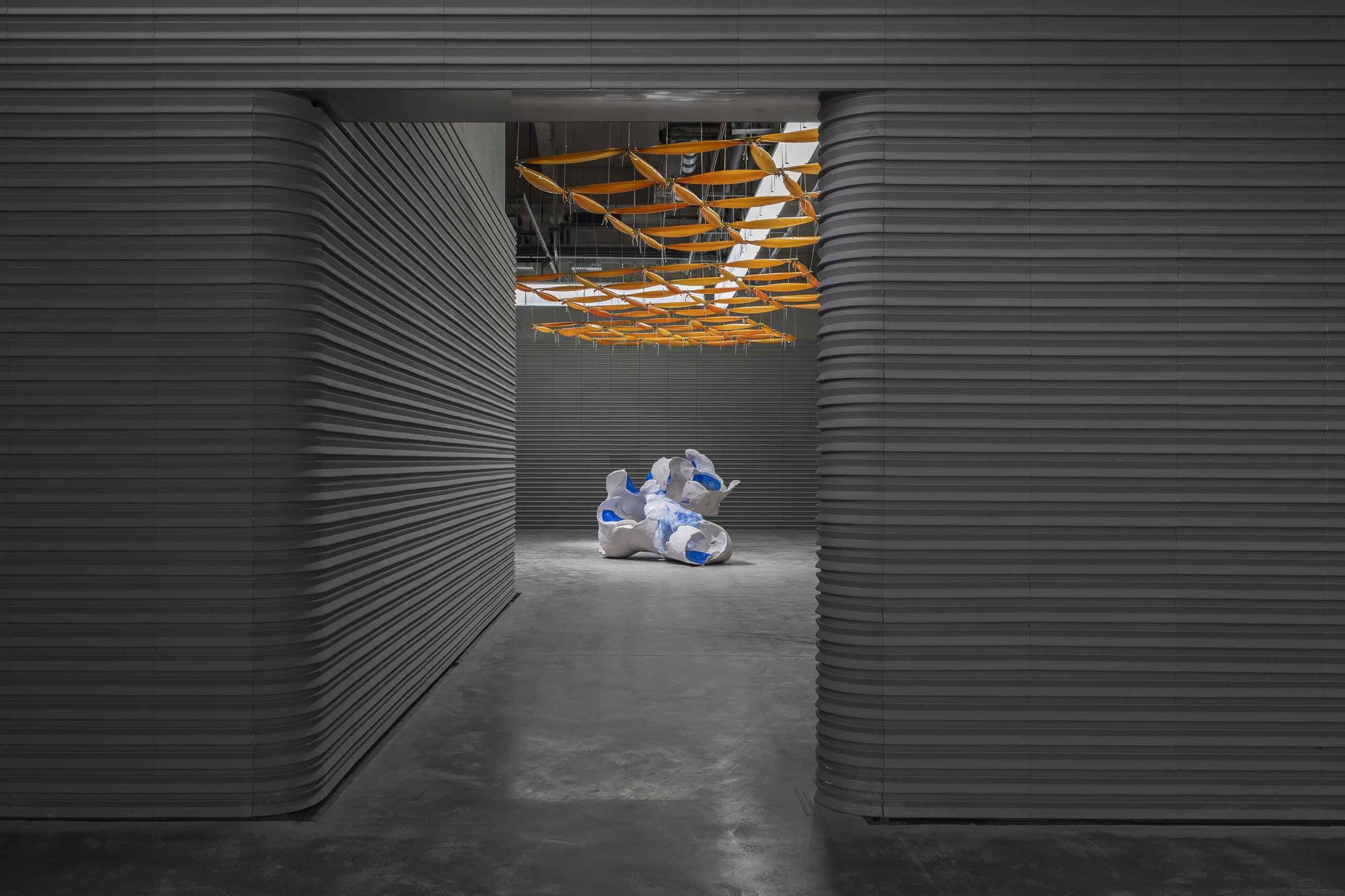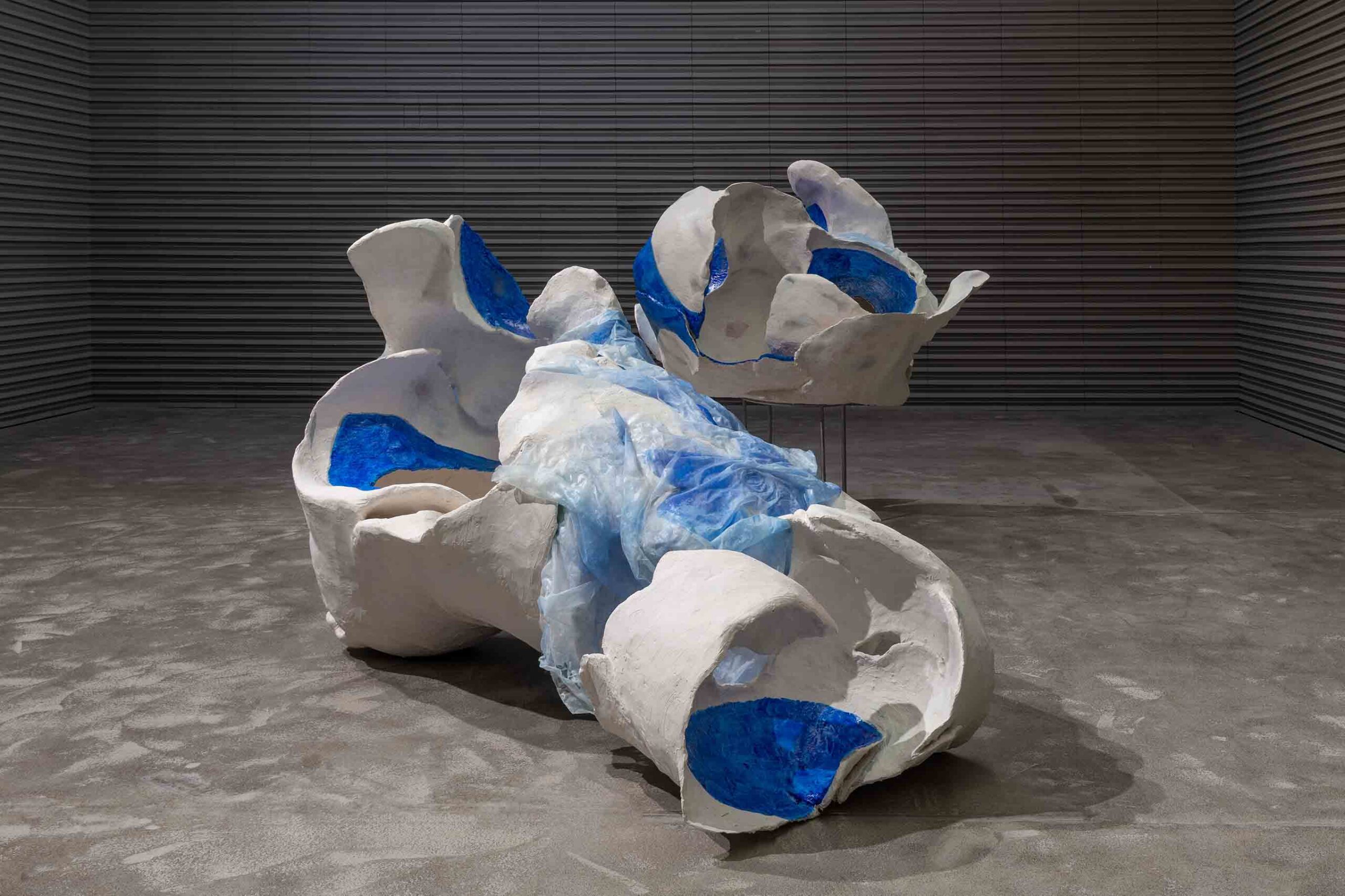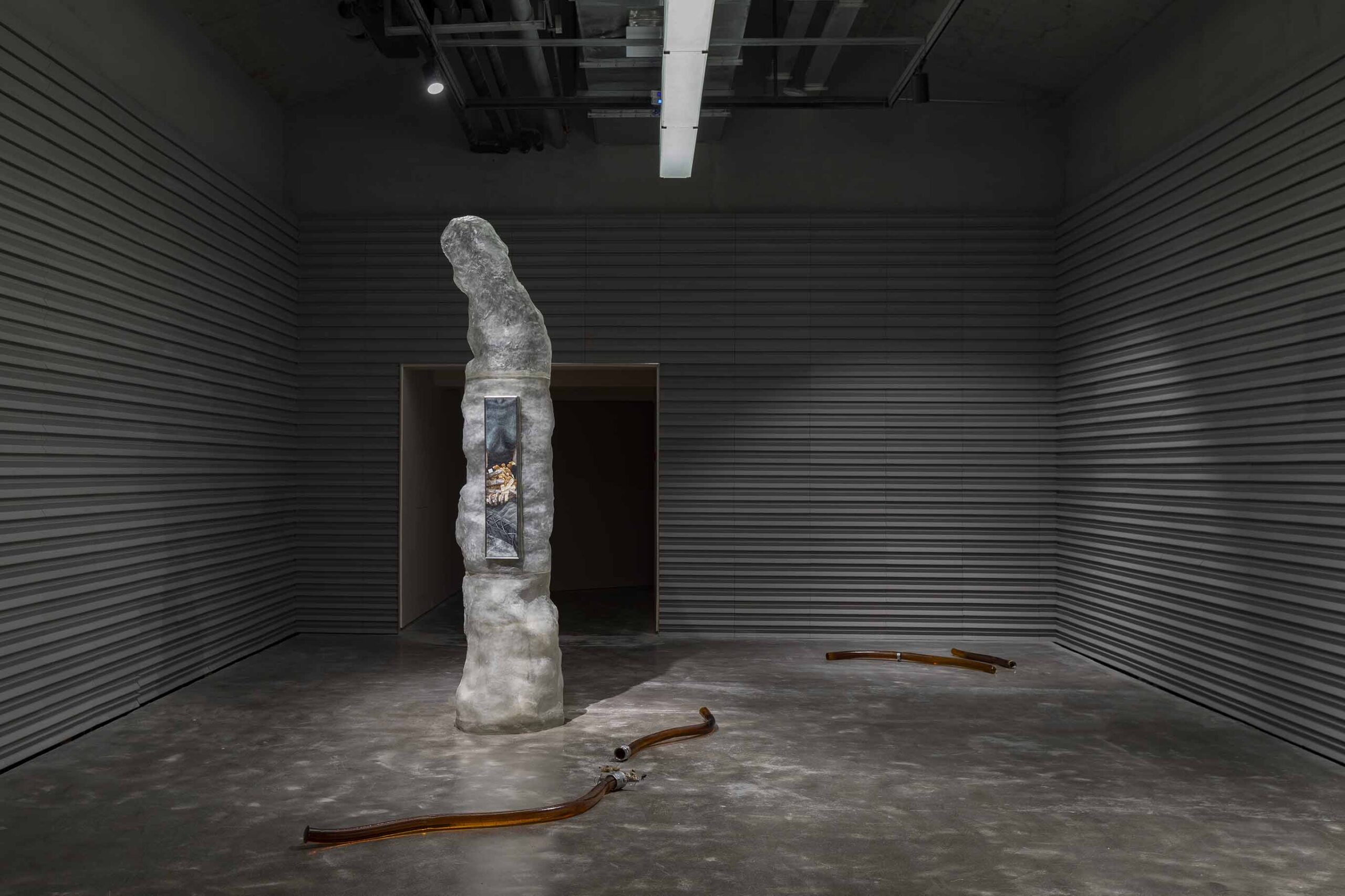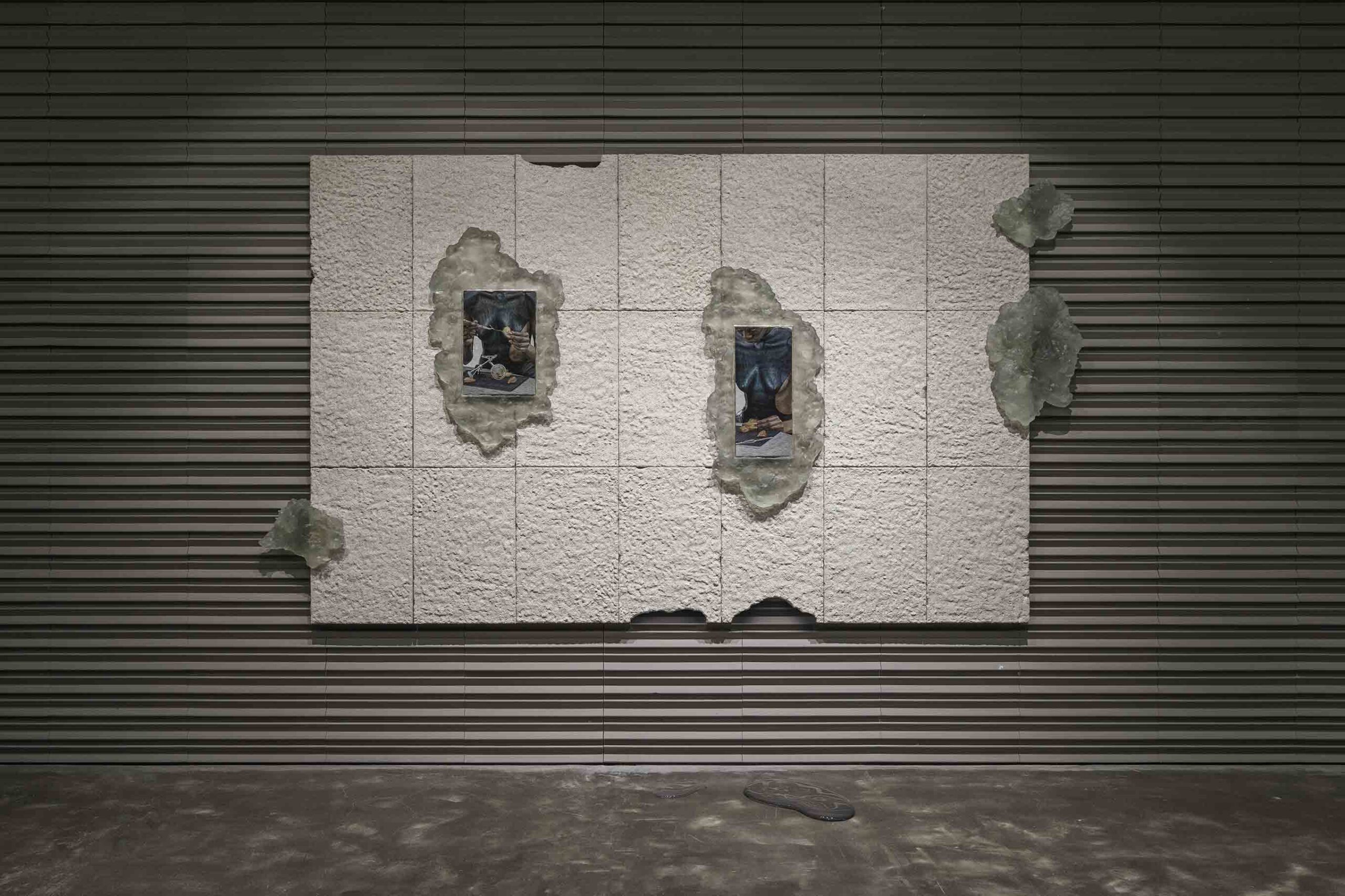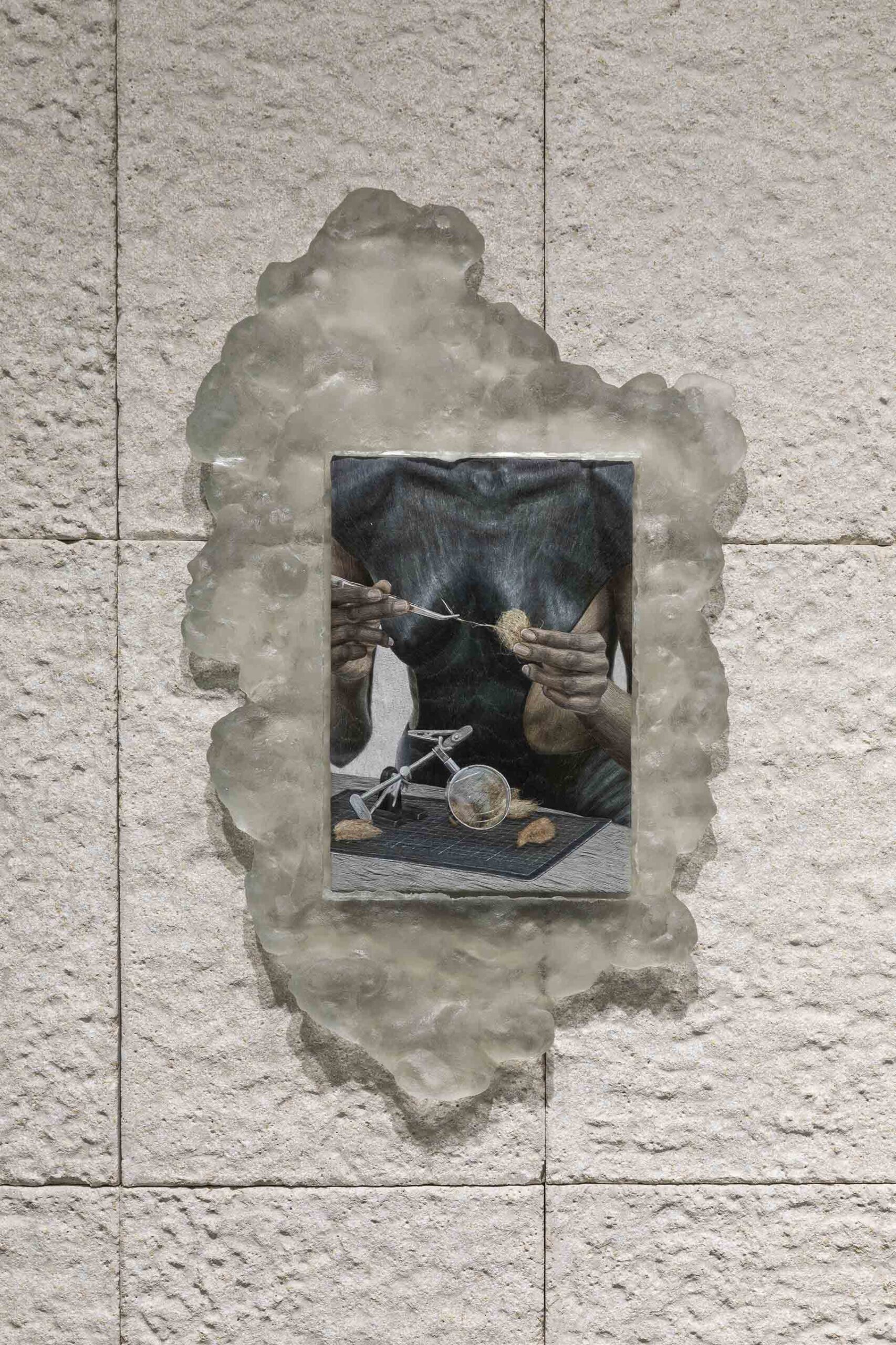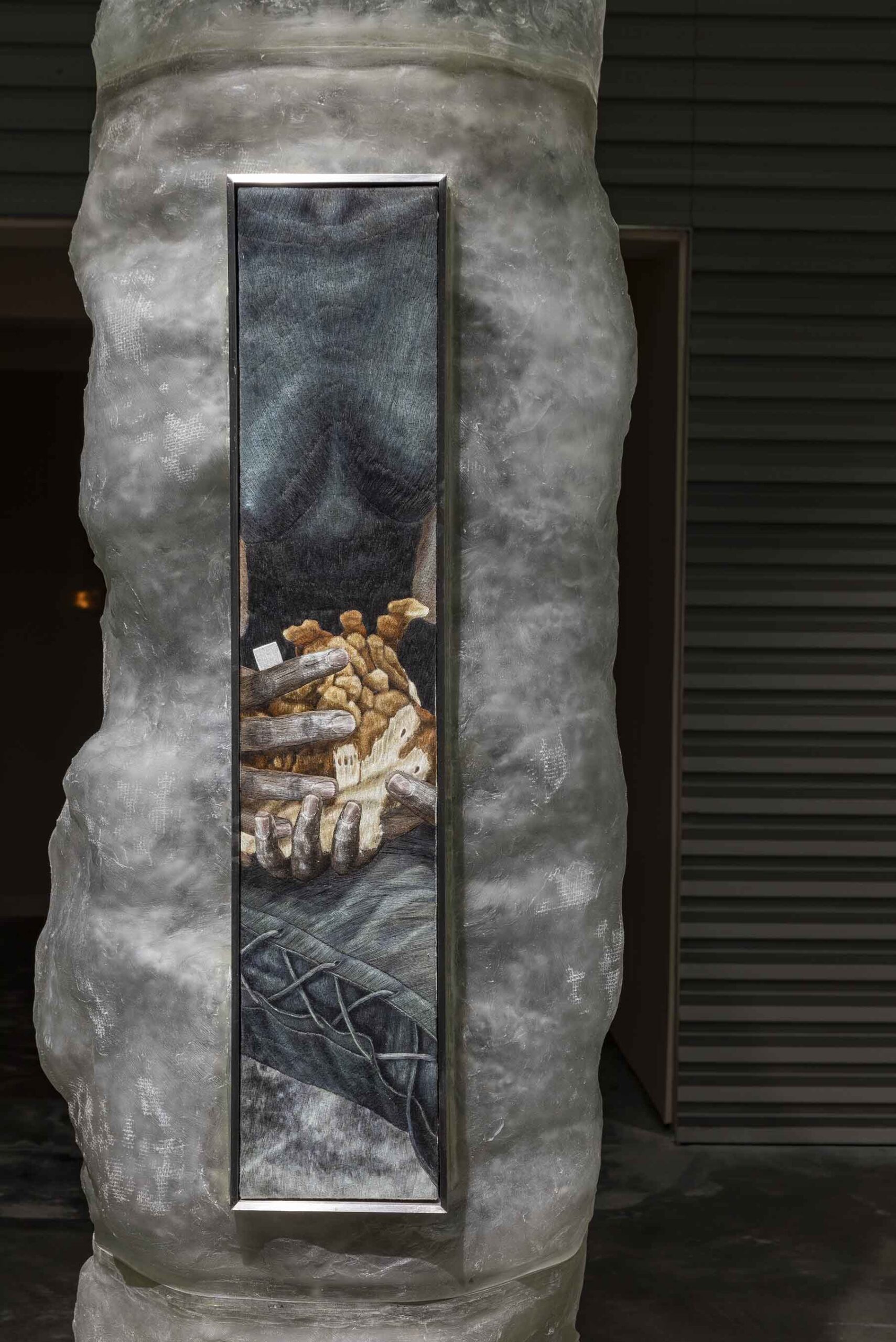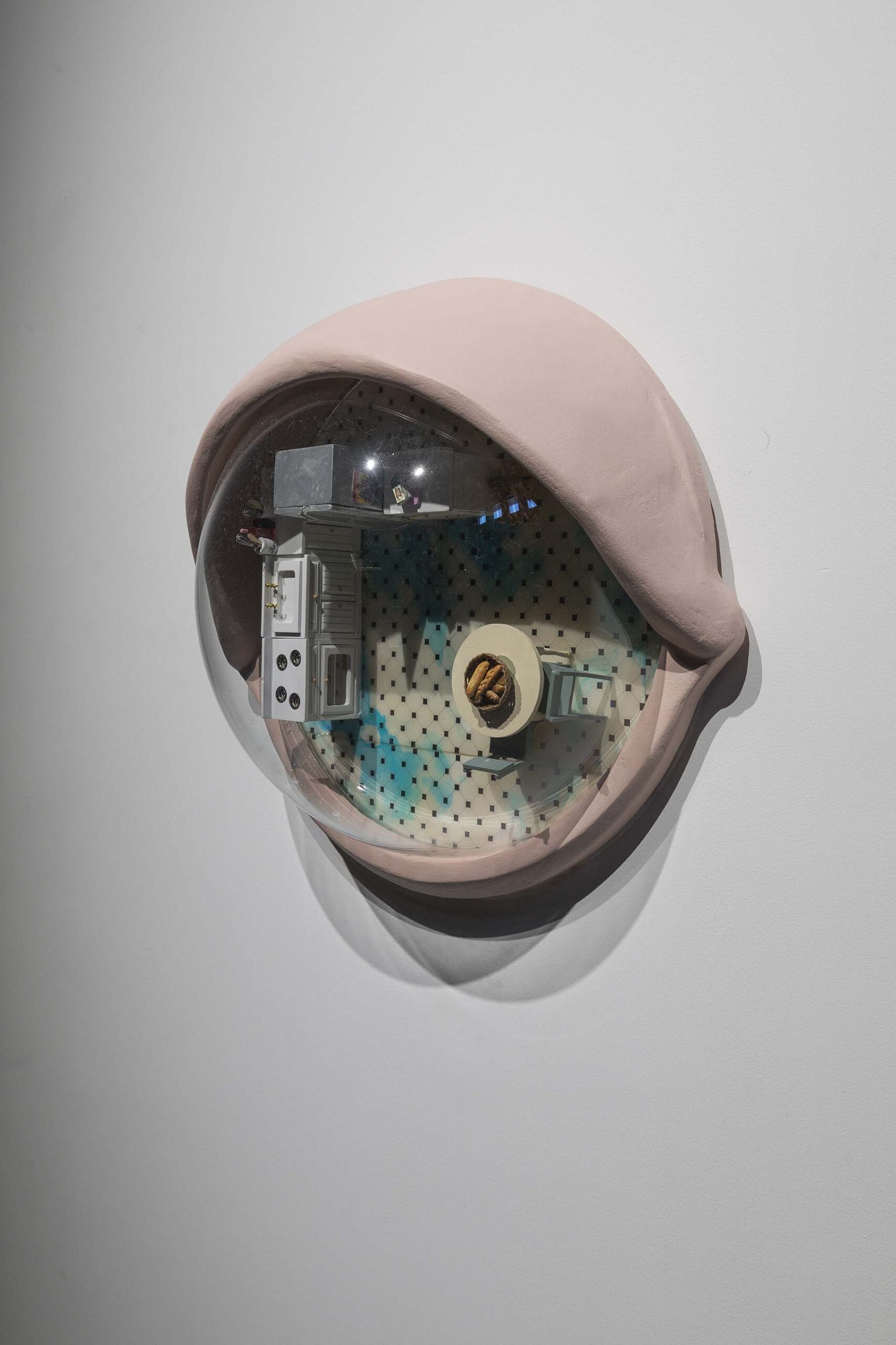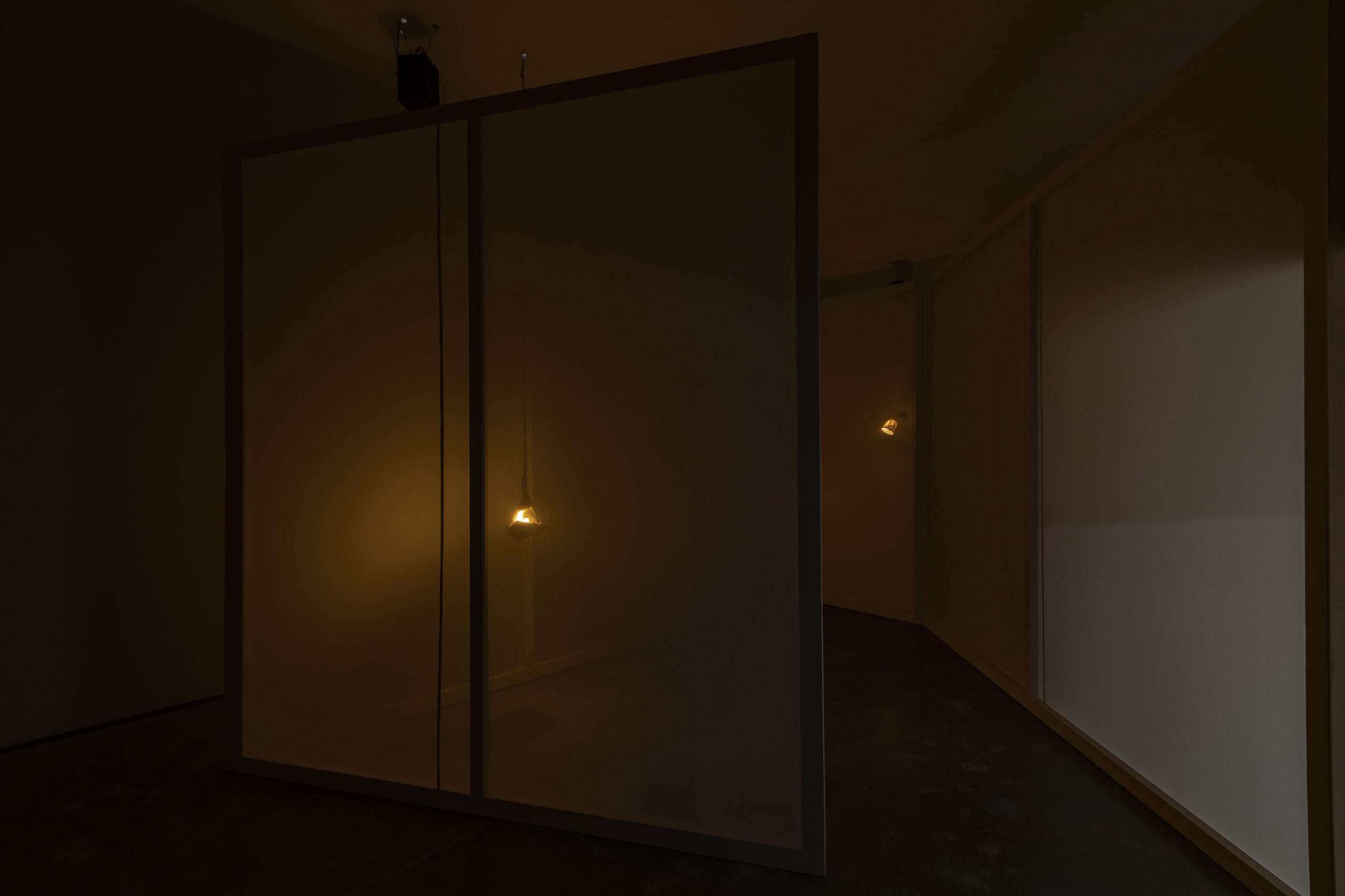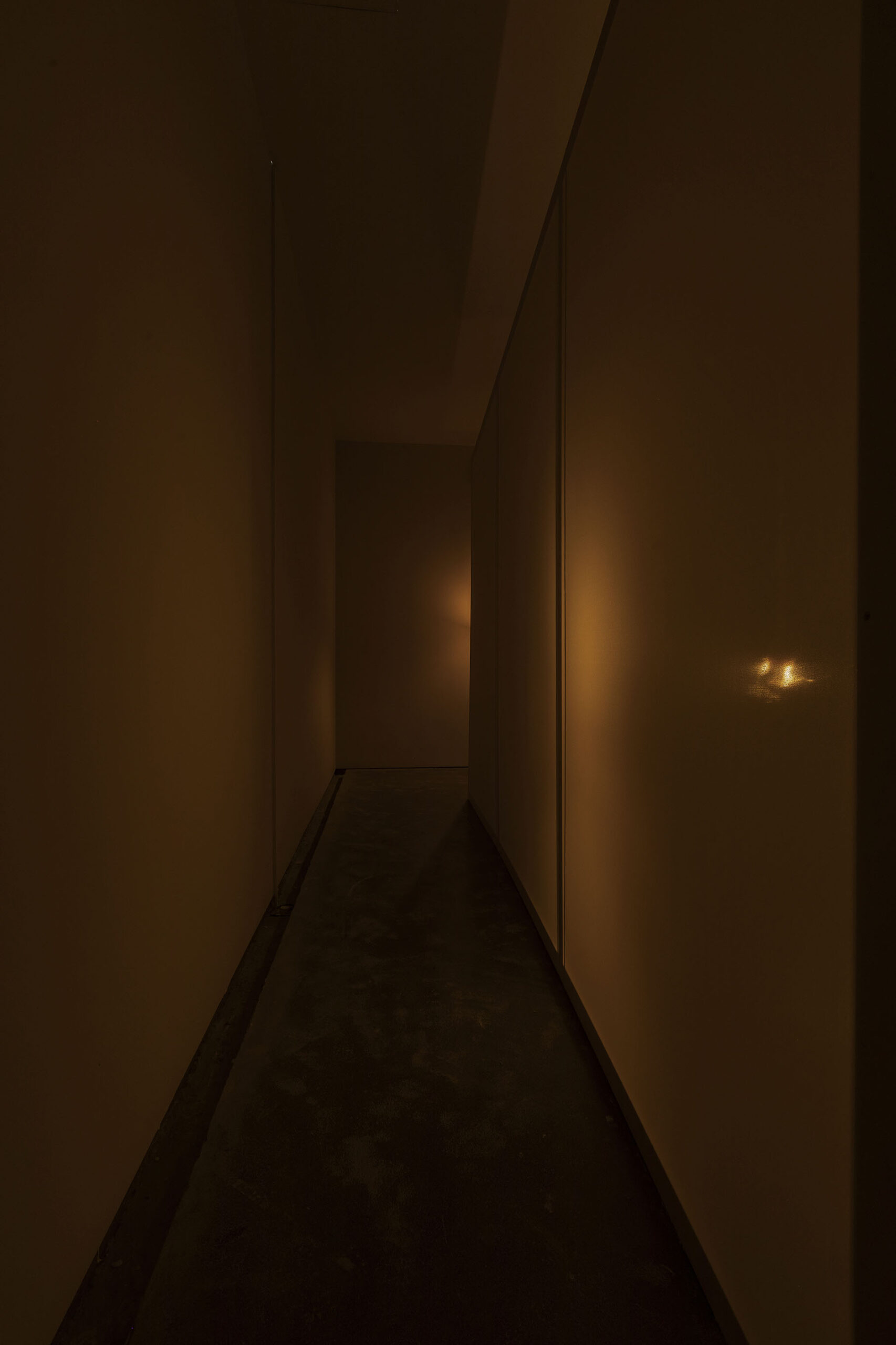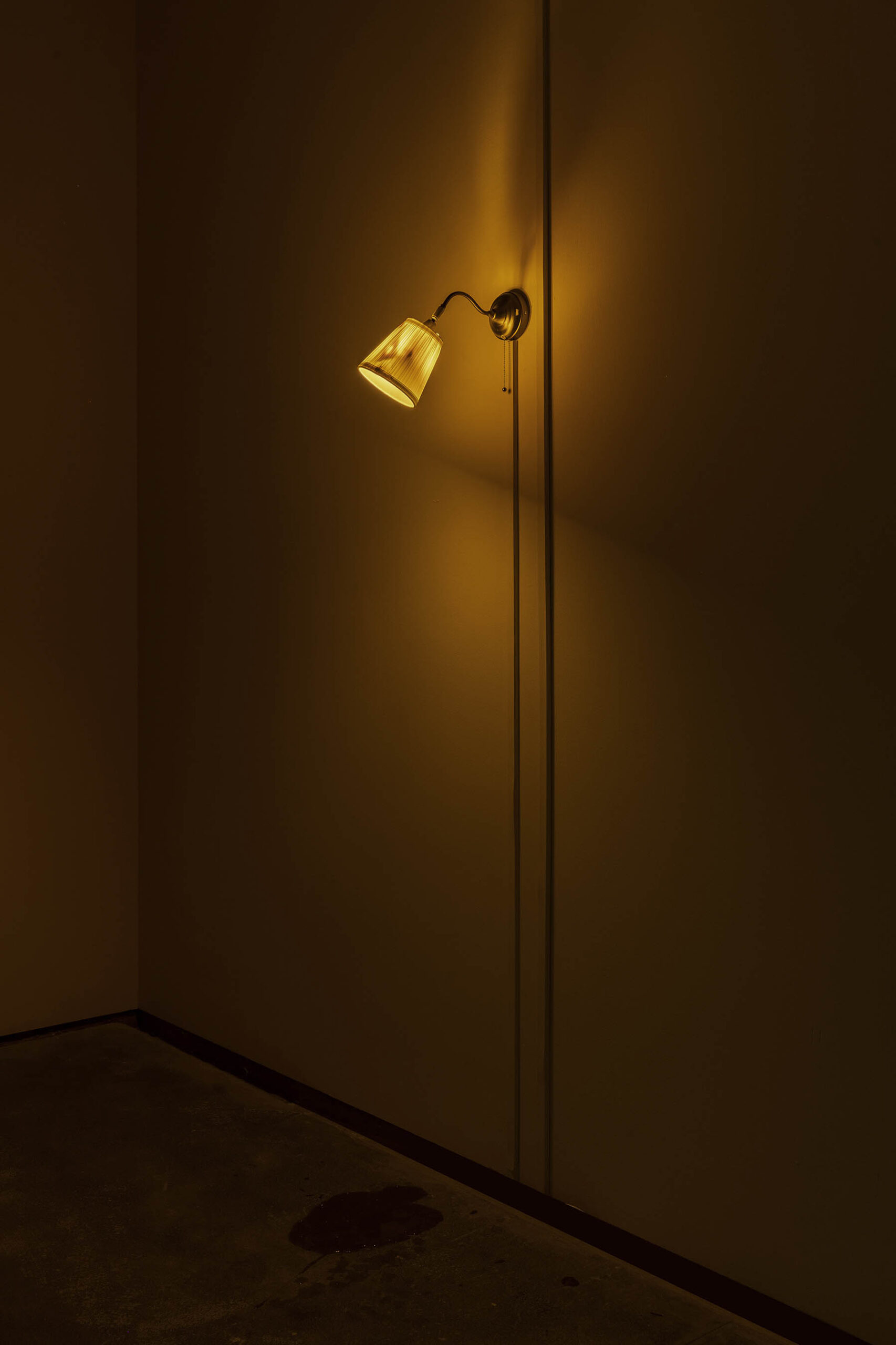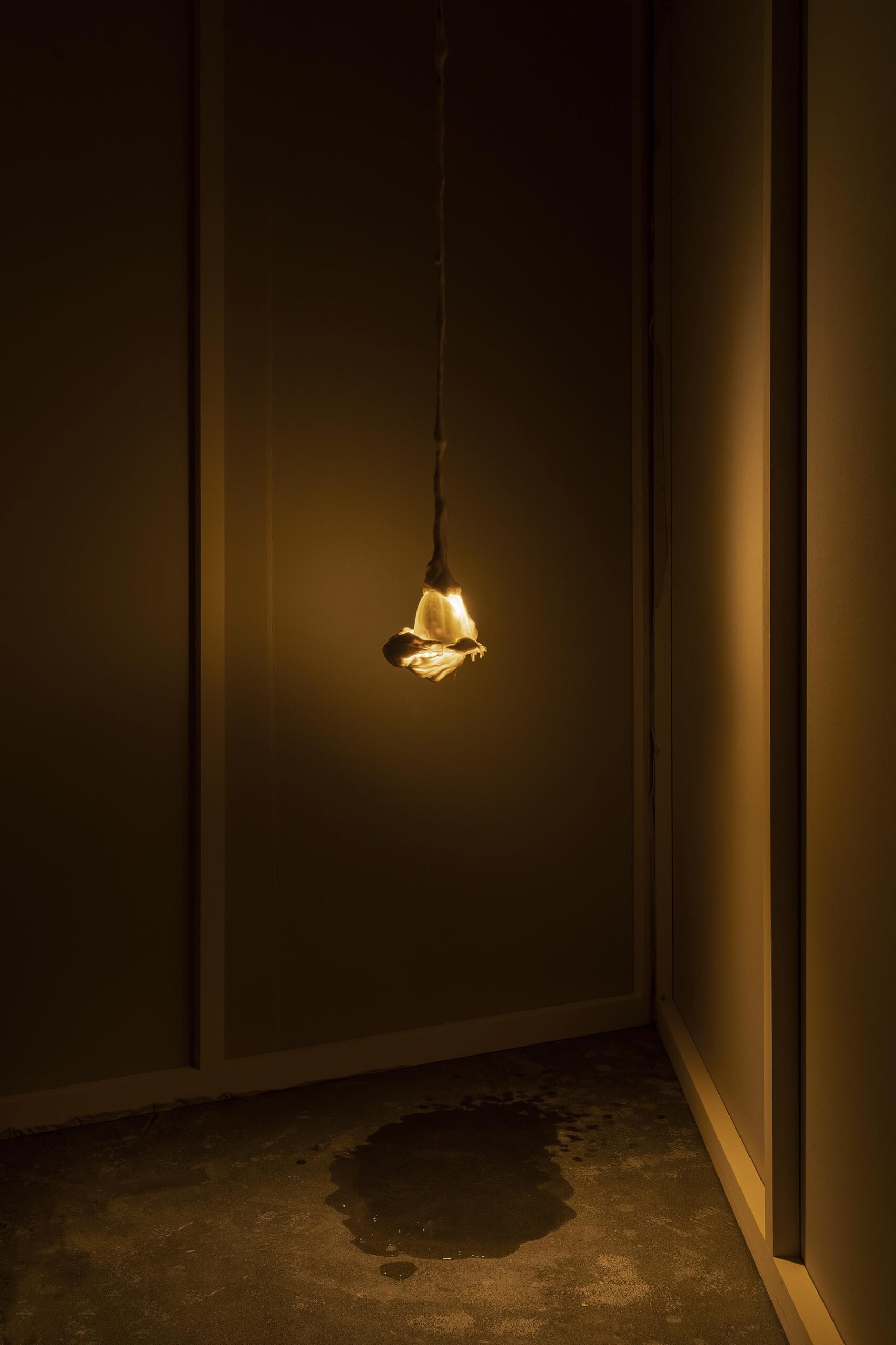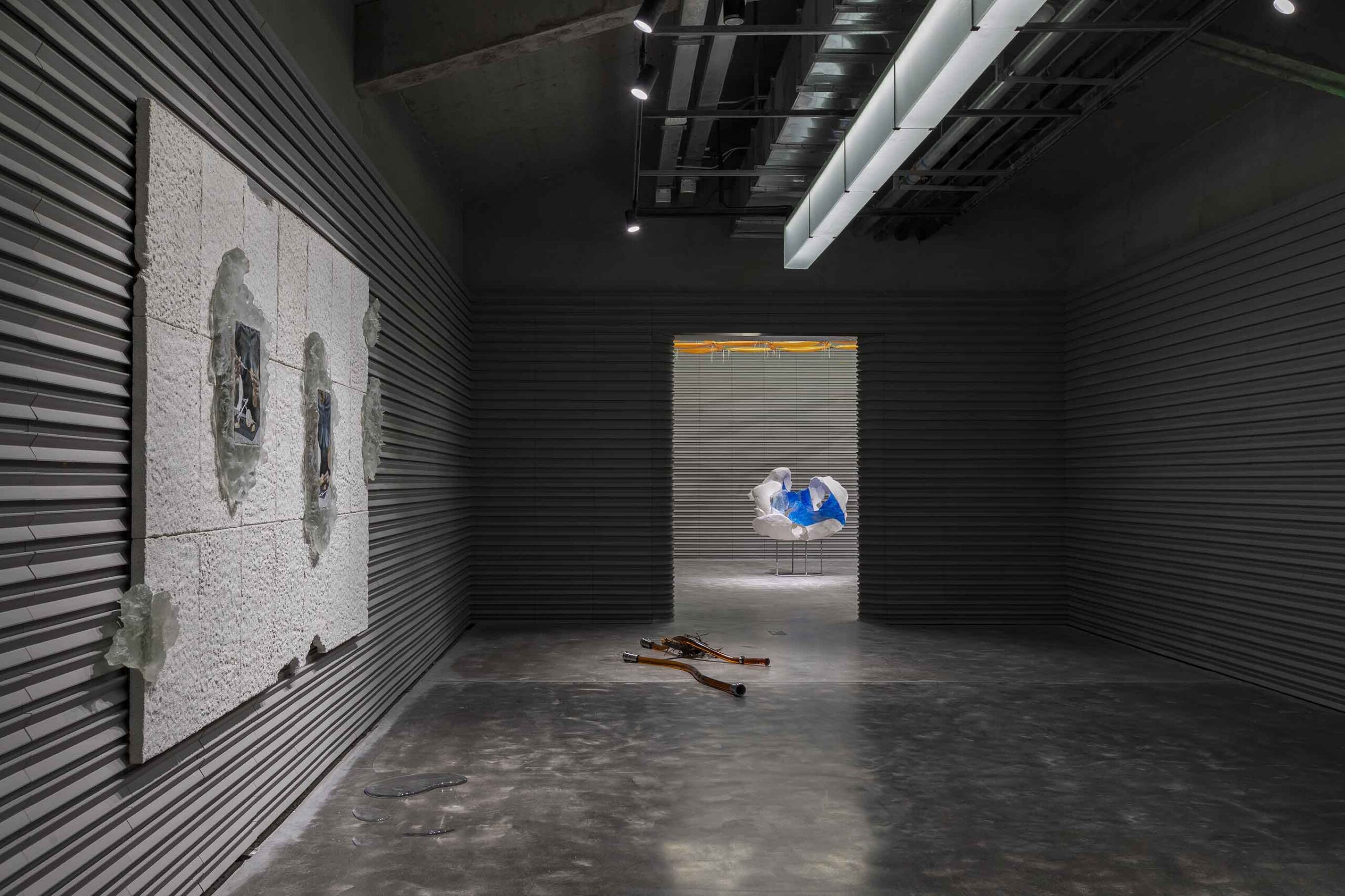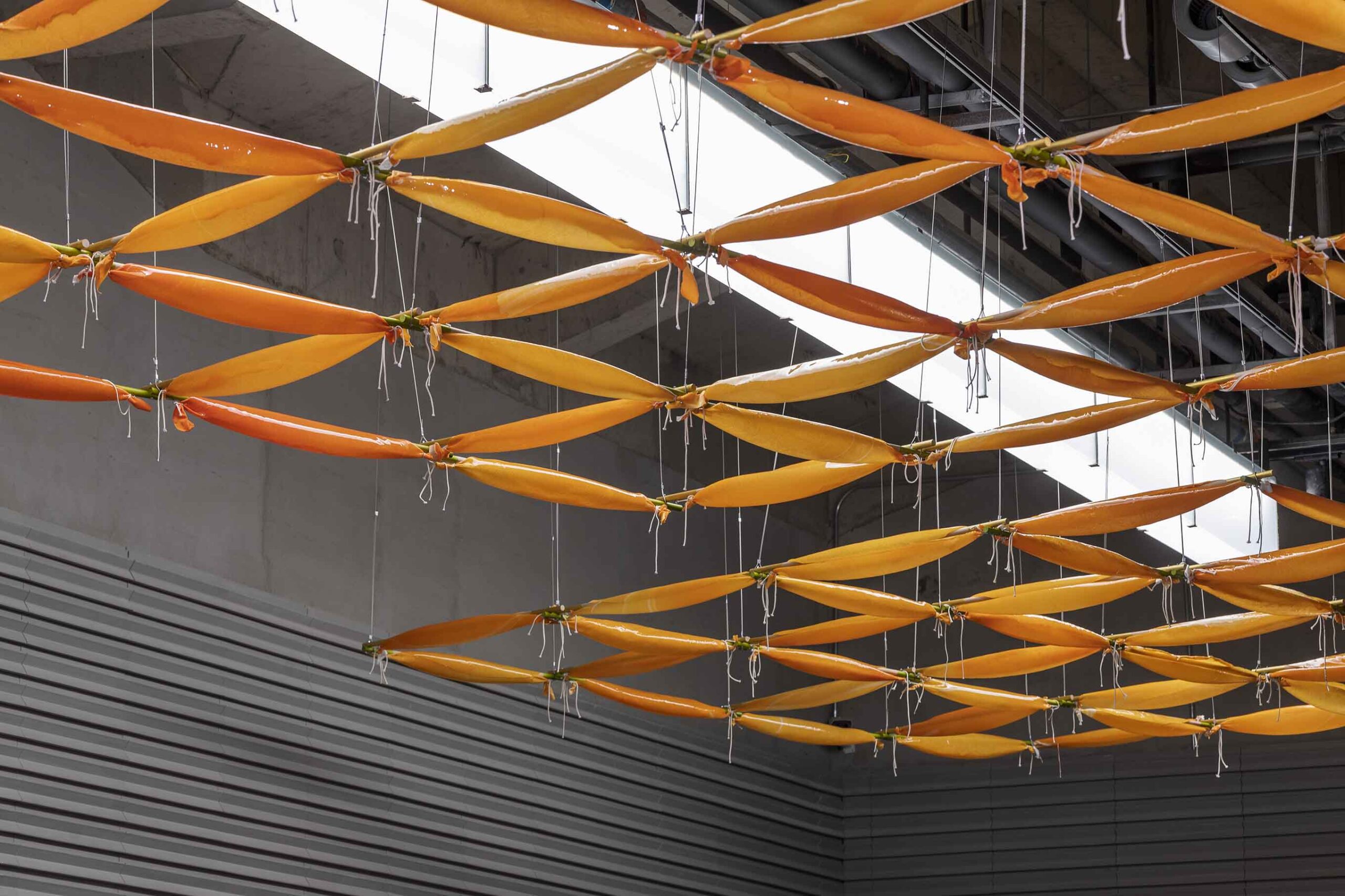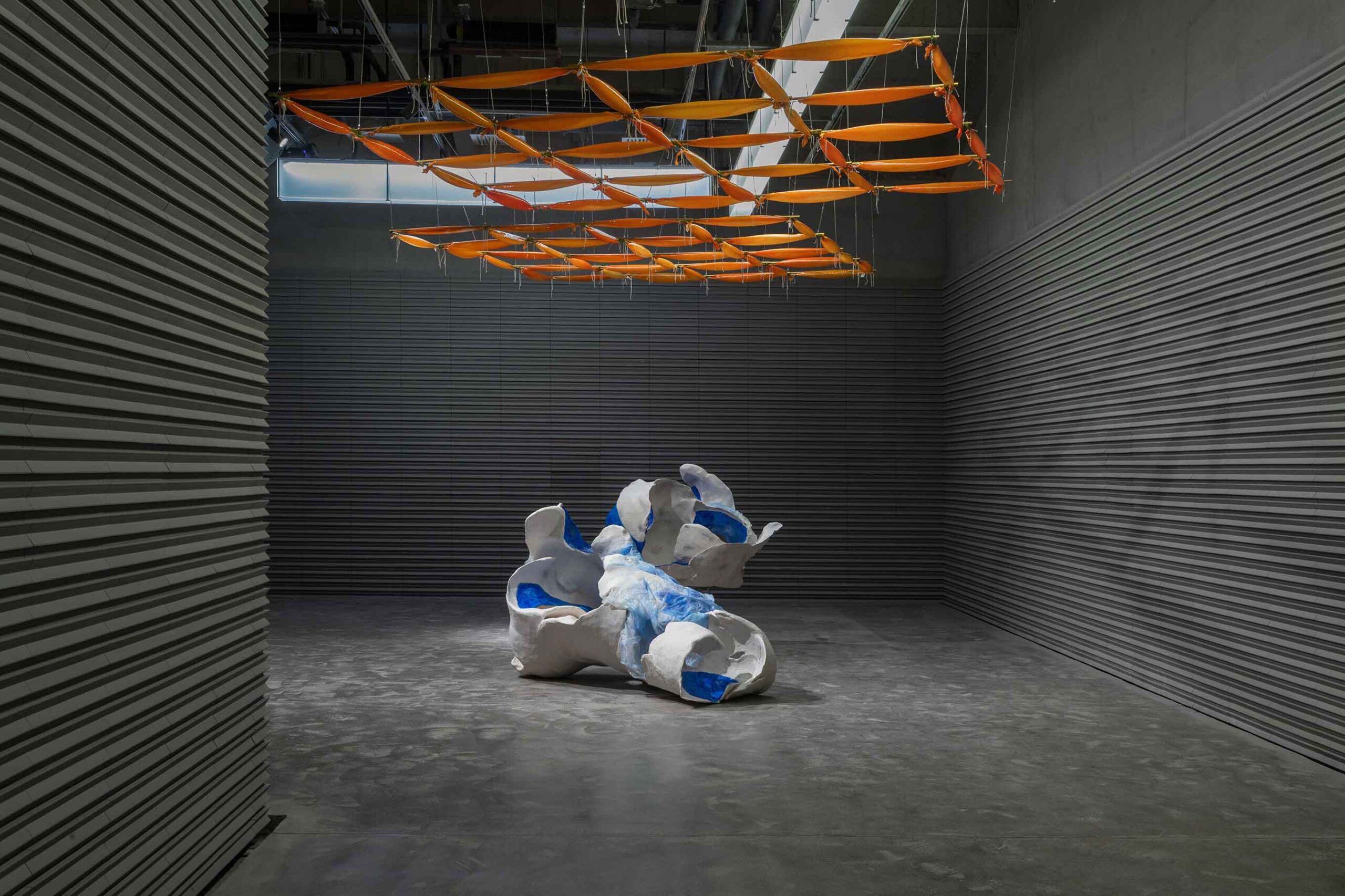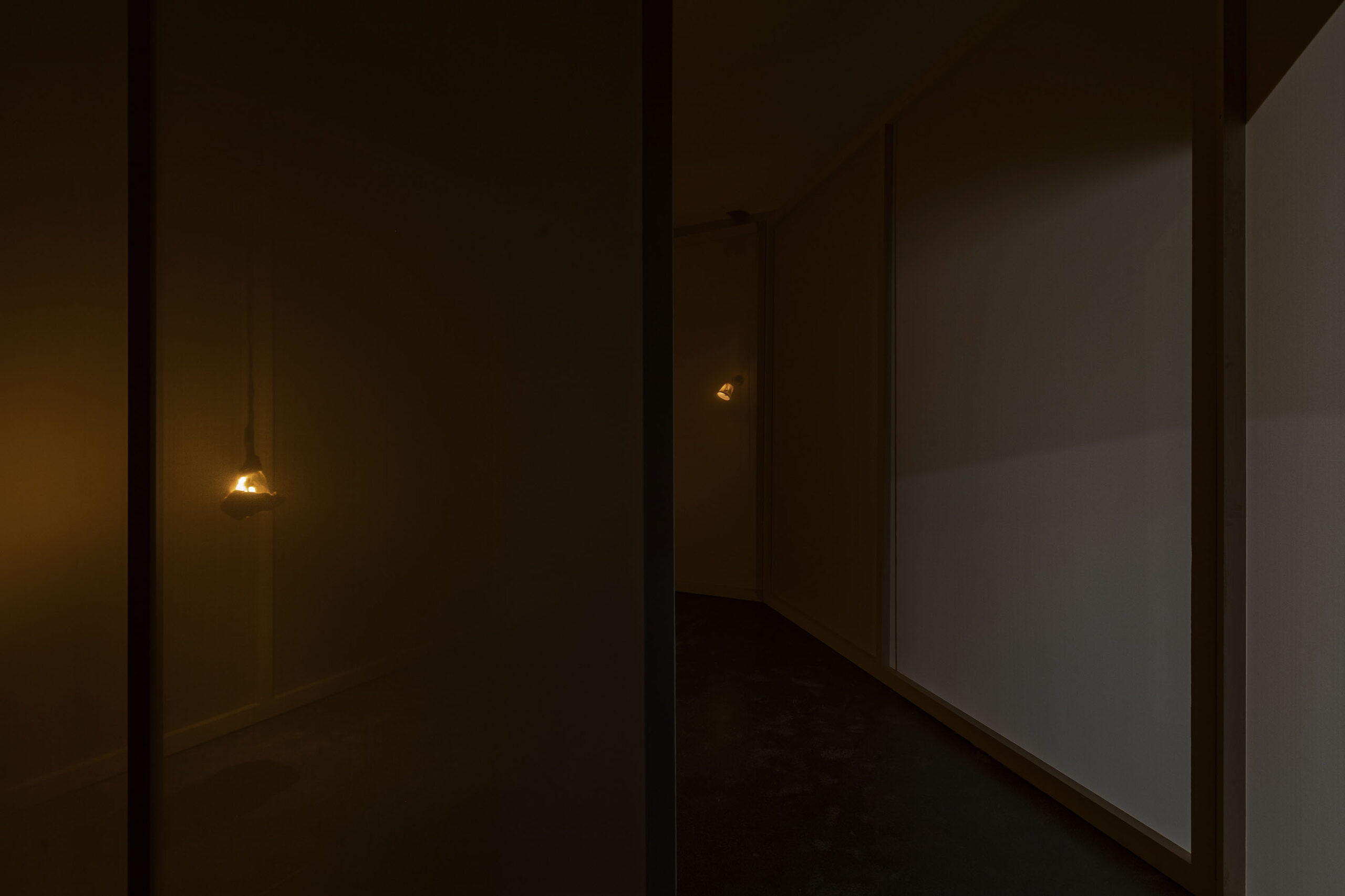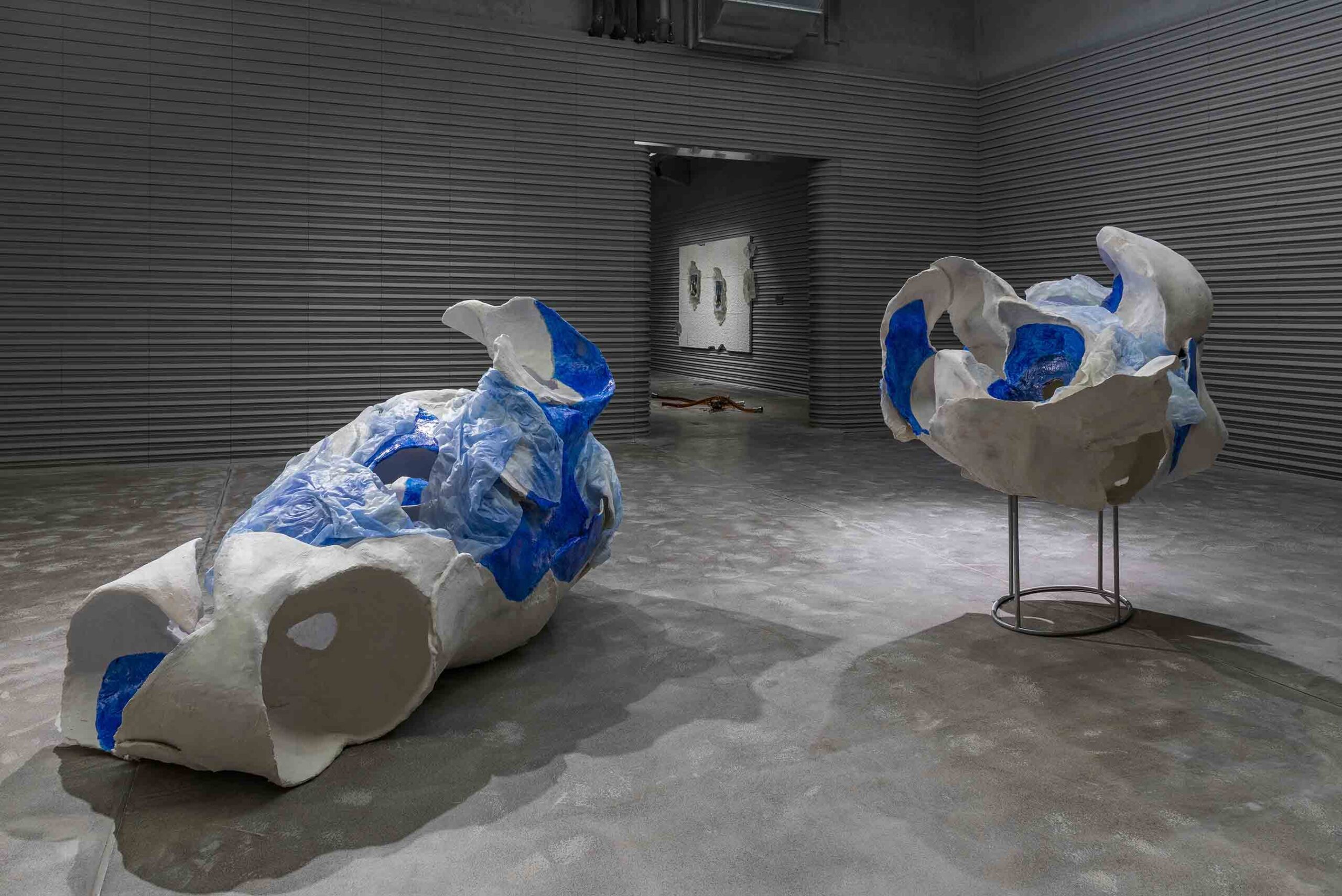
X Museum is pleased to present the group exhibition ‘The Kick Inside’ from 17 April to 17 July 2022. The exhibition brings together the works of four domestic and international artists, with some of the pieces being newly created in accordance with the space and discourse of the exhibition. Through the transliteration and re-enactment of bodily experiences, the exhibition seeks to explore the volatility of the body, revealing the anchored connections between culture, nature and the human body via the artists’ sculptural experiments with various materials.
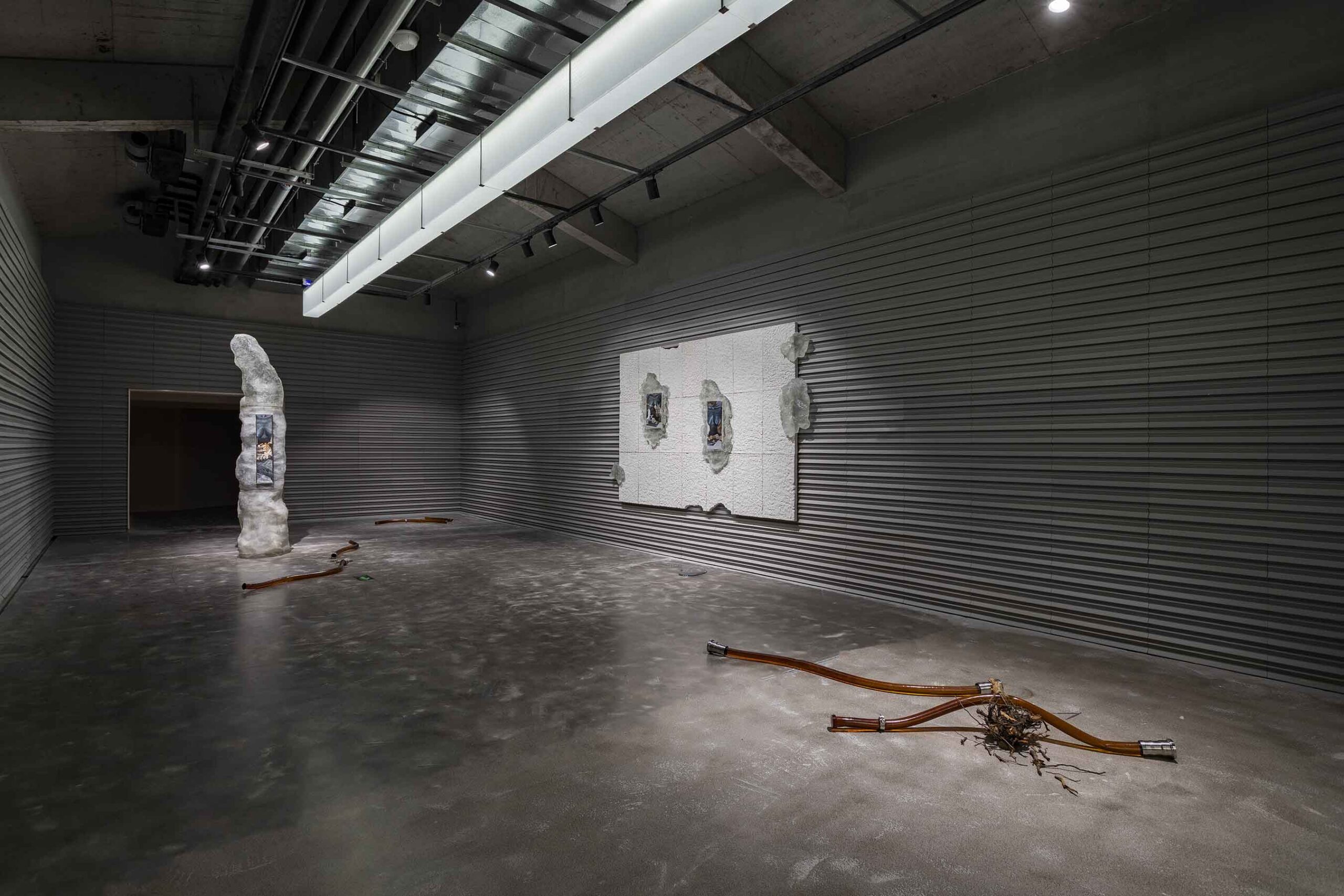 The body is a fluid and constantly contested system. As such, our consciousness, identity and senses are constructed and emerge into a broader realm through the most essential acts of life — touching, breathing, looking, and hearing. Through the perception and scrutinization of the body, we are able to decipher the complexities of social history and the individual reality embedded in perpetual flux. Examining the ‘thingness’ of the body, ‘The Kick Inside’ evaluates how the body can be conceived as a place of encounters where biology, material, and personal narratives convene. The title of the exhibition, ‘The Kick Inside’, is taken from the eponymous 1978 song by British musician Kate Bush. A reference to English folklore, ‘Lucie Wan’, which depicts a tragedy of incest, the song refers to a corporeal experience unique to women: pregnancy, childbearing, and feeling the baby’s kick within. The artists in the exhibition are all committed to a bodily approach to their practice; they invoke or dismantle the multidimensional connotations of the body in an either playful or pensive way, re-contemplating how identities, memories, emotions and fantasies triggered by the body play out through the lens of disparate cultures and histories.
The body is a fluid and constantly contested system. As such, our consciousness, identity and senses are constructed and emerge into a broader realm through the most essential acts of life — touching, breathing, looking, and hearing. Through the perception and scrutinization of the body, we are able to decipher the complexities of social history and the individual reality embedded in perpetual flux. Examining the ‘thingness’ of the body, ‘The Kick Inside’ evaluates how the body can be conceived as a place of encounters where biology, material, and personal narratives convene. The title of the exhibition, ‘The Kick Inside’, is taken from the eponymous 1978 song by British musician Kate Bush. A reference to English folklore, ‘Lucie Wan’, which depicts a tragedy of incest, the song refers to a corporeal experience unique to women: pregnancy, childbearing, and feeling the baby’s kick within. The artists in the exhibition are all committed to a bodily approach to their practice; they invoke or dismantle the multidimensional connotations of the body in an either playful or pensive way, re-contemplating how identities, memories, emotions and fantasies triggered by the body play out through the lens of disparate cultures and histories.
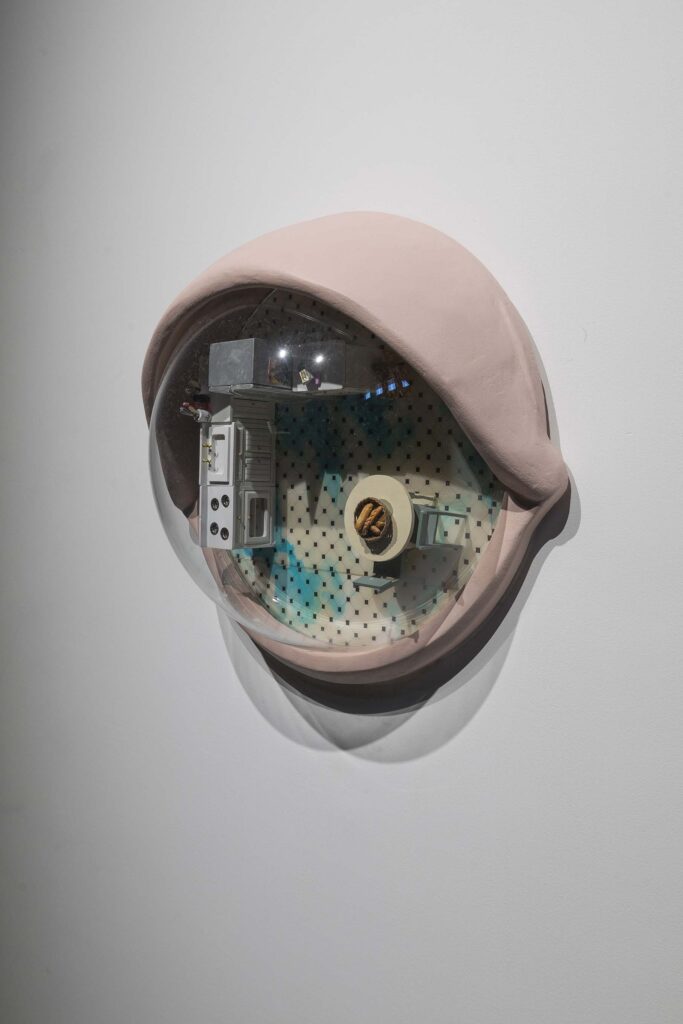
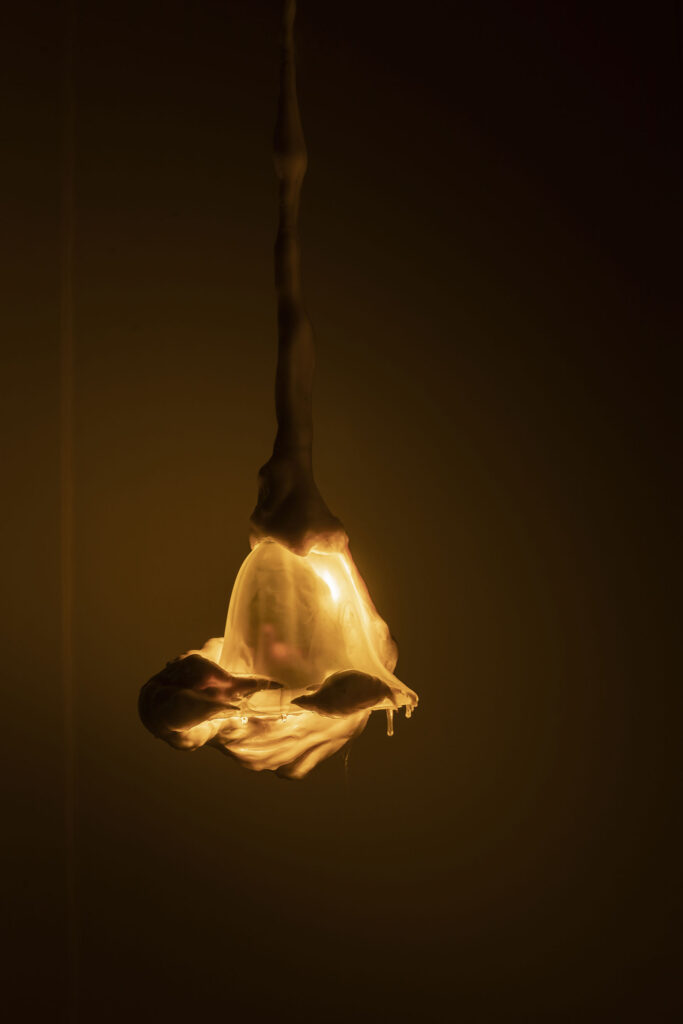 The exhibition aims to reflect how the body’s physical presence is entwined within the turbulence of culture and society, underlining how the body is approached as a medium and subject by artists and asking a series of critical reality-related questions in light of this. The Australian feminist philosopher Elizabeth Grosz once proposed the concept of ‘volatile bodies’ to emphasise the virtualities and potentialities inherent within biological existence, associating the physicality of the body with social and historical forces in order to articulate the intricate relationship between nature and culture. The body is not merely a material that transcends any conceptualisation; its formations are actively involved in the transformation and evolving processes of all cultural life. Drawing from four different cultural contexts, the exhibition seeks to understand where the body is critically situated in the otherness of these different cultures. The exhibition thereby intends to construct a perceptual space in which the body is not solely a measure of life, but also represents a crossroads intersecting the historical and the present, as well as the collective and the individual.
The exhibition aims to reflect how the body’s physical presence is entwined within the turbulence of culture and society, underlining how the body is approached as a medium and subject by artists and asking a series of critical reality-related questions in light of this. The Australian feminist philosopher Elizabeth Grosz once proposed the concept of ‘volatile bodies’ to emphasise the virtualities and potentialities inherent within biological existence, associating the physicality of the body with social and historical forces in order to articulate the intricate relationship between nature and culture. The body is not merely a material that transcends any conceptualisation; its formations are actively involved in the transformation and evolving processes of all cultural life. Drawing from four different cultural contexts, the exhibition seeks to understand where the body is critically situated in the otherness of these different cultures. The exhibition thereby intends to construct a perceptual space in which the body is not solely a measure of life, but also represents a crossroads intersecting the historical and the present, as well as the collective and the individual.
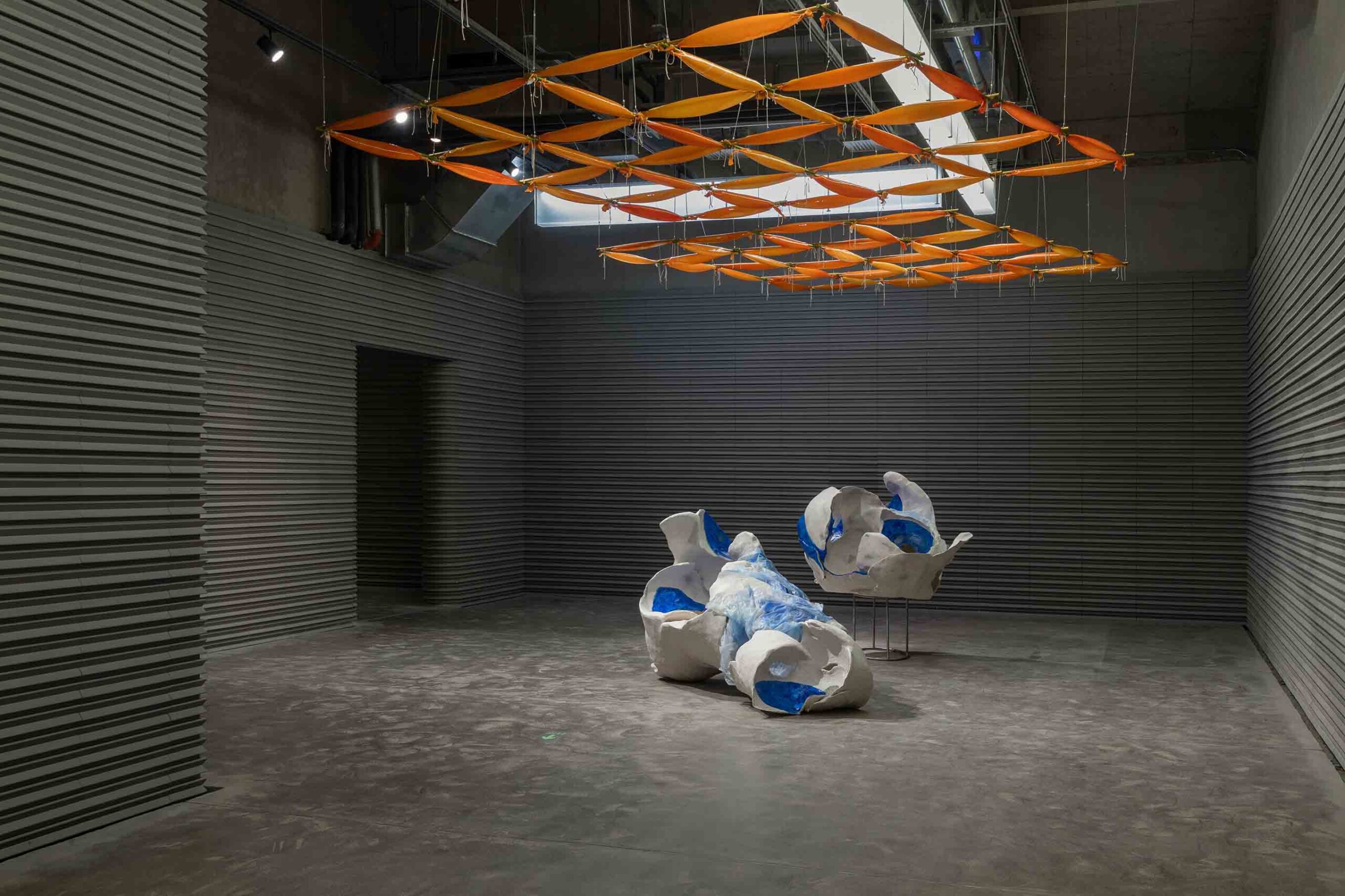 By undertaking a painstaking investigation into the forms of the human body and life’s connotations, ‘The Kick Inside’ highlights the body’s multifarious patterns and ever-changing states. While enabling the audience to perceive a somewhat intertextual relationship inside the space, distinct narratives emerge from the works, with each artist occupying their own gallery: the alien human eyes look into the psychic terrain of domestic space in the age of surveillance capitalism; the floral hearts evoke the rhythm of the demise of life; the embroideries and stelae outline the utopian collective dream of a post-Soviet Eastern European country; and the vanishing nymph drips with the bodily fluids of pain. These works engage with ideas presented in fields ranging from postmodern ecology and feminism to science fiction literature and folklore. Ultimately, through the mobilisation of the senses and space, the audience is encouraged to become involved in the storytelling, touching on the subtle emotions that surge within the body.
By undertaking a painstaking investigation into the forms of the human body and life’s connotations, ‘The Kick Inside’ highlights the body’s multifarious patterns and ever-changing states. While enabling the audience to perceive a somewhat intertextual relationship inside the space, distinct narratives emerge from the works, with each artist occupying their own gallery: the alien human eyes look into the psychic terrain of domestic space in the age of surveillance capitalism; the floral hearts evoke the rhythm of the demise of life; the embroideries and stelae outline the utopian collective dream of a post-Soviet Eastern European country; and the vanishing nymph drips with the bodily fluids of pain. These works engage with ideas presented in fields ranging from postmodern ecology and feminism to science fiction literature and folklore. Ultimately, through the mobilisation of the senses and space, the audience is encouraged to become involved in the storytelling, touching on the subtle emotions that surge within the body.
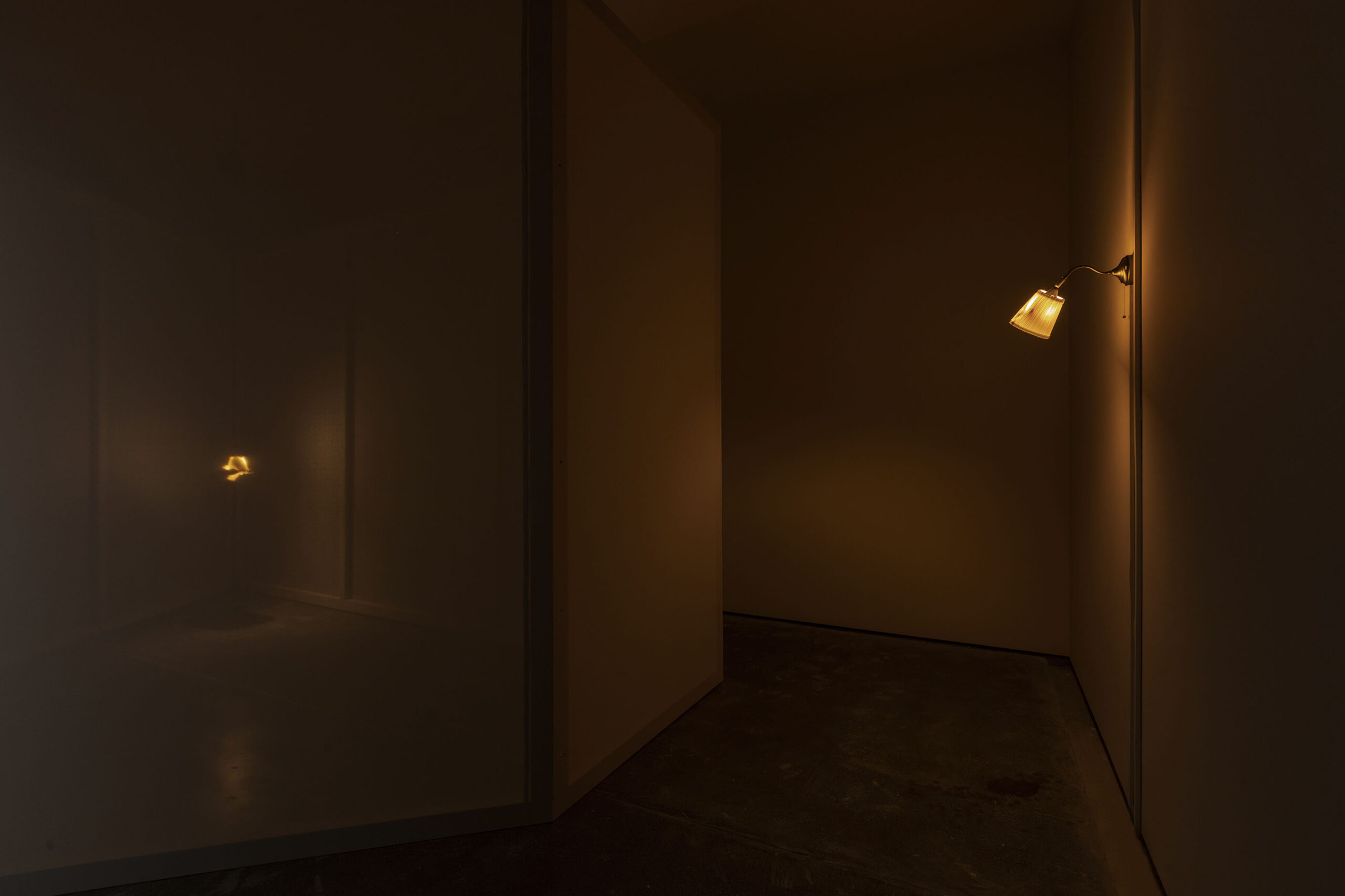
About the Artist
Olivia Erlanger (b. 1990, New York) lives and works in Los Angeles. Through an exploration on American folklore and symbols of the middle class from a feminist and cinematic perspective, Erlanger’s work investigates how the different kinds of collapse in economics and ecologies influence the recent fracturing of identity. Her recent solo exhibitions include “Home is A Body” (Soft Opening, London, 2020); “Split-level Paradise” (Bel Ami, Los Angeles, 2020); “Ida” (Motherculture, Los Angeles, 2018); “mouths filled with pollen” (AND NOW, Dallas, 2018). Selected group exhibitions include “Liquid Life” (Kistefos Museum, Jevnaker, 2020); “Winterfest” (Aspen Art Museum, Aspen, 2020); “What do People do All Day?” (Kunsthal Charlottenborg, Copenhagen, 2020); “No Space Just a Place” (Daelim Museum, Seou, 2020); “Entangled Tales, Rupert, Vilnius, 2018). Daiga Grantina (b. 1985, Saldus, Latvia), lives and works in Paris. Grantina’s sculptures borrow abstract vocabulary from bodies and landscapes to explore the intertextual relationship between different materials, gaining insight into the invisible and the tangible, the dissonance and consonance between organisms and their changing environment. Her recent solo exhibitions include: “Learning from Feathers” (Liebarert Projects, Kortrijk, 2021); “What Eats Around Itself” (New Museum, New York, 2020); “Saules Sun” (Latvian Pavilion, Venice Biennale, Venice, 2019); “Toll” (Palais de Tokyo, Paris, 2018) and more. Selected group exhibitions include “Post-digital Intimacy, Prague National Gallery, Prague, 2021); “Words at an Exhibition” (Busan Biennale, Busan, 2020); “Solar Bodies” (Musée d’Orsay, Paris, 2018). Klára Hosnedlová (b.1990, Uherské Hradiště), lives and works in Berlin. Hosnedlová’s work explores historical sentiments as they crystallize in modern and contemporary design and architecture. Her sculptures are indebted to Eastern European histories and the past collective mythologies. Her recent solo exhibitions include: “Nest” (Kraupa-Tuskany Zeidler, Berlin, 2020); “Seated Woman” (Karlin Studios, Prague, 2019). Her recent solo exhibitions include: “Parcours” (Art Basel, Basel, 2021); “The Endless Frontier” (Baltic Triennial, Vilnius, 2021); “Eclipse” (Athens Biennial, Athens, 2021); “Metamorphosis. Art in Europe Now” (Cartier Foundation, Paris, 2019). Tan Jing (b. 1992, Guangdong),lives and works in Guangzhou and Shenzhen. Tan is keen on experimenting with textures, materials, and form within sculpture and installation. Her practice combines her expertise in the unpredictable composition of materials and techniques, with her whimsical intertwist of elements from biology and folklore. Tan has been experimenting with recreating new versions of a story, by dint of the formation of speculative relations among personal experiences, folklores and historical trajectories, from imagined spaces navigated by flowing and straying experiential empathy. Her recent exhibitions include: “Trancing Lap Hung” (HB Station, 2022); “Curtain” (Para Site, Hong Kong, 2021); “More, More, More” (Tank Shanghai, Shanghai, 2020); “Study of Things – Or A Brief Story about Fountai, Brink, Tin, Coin, Stone, Shell, Curtain, and Body” (Guangdong Times Museum, Guang Dong, 2020) and more.About The Artists
About The Curators
